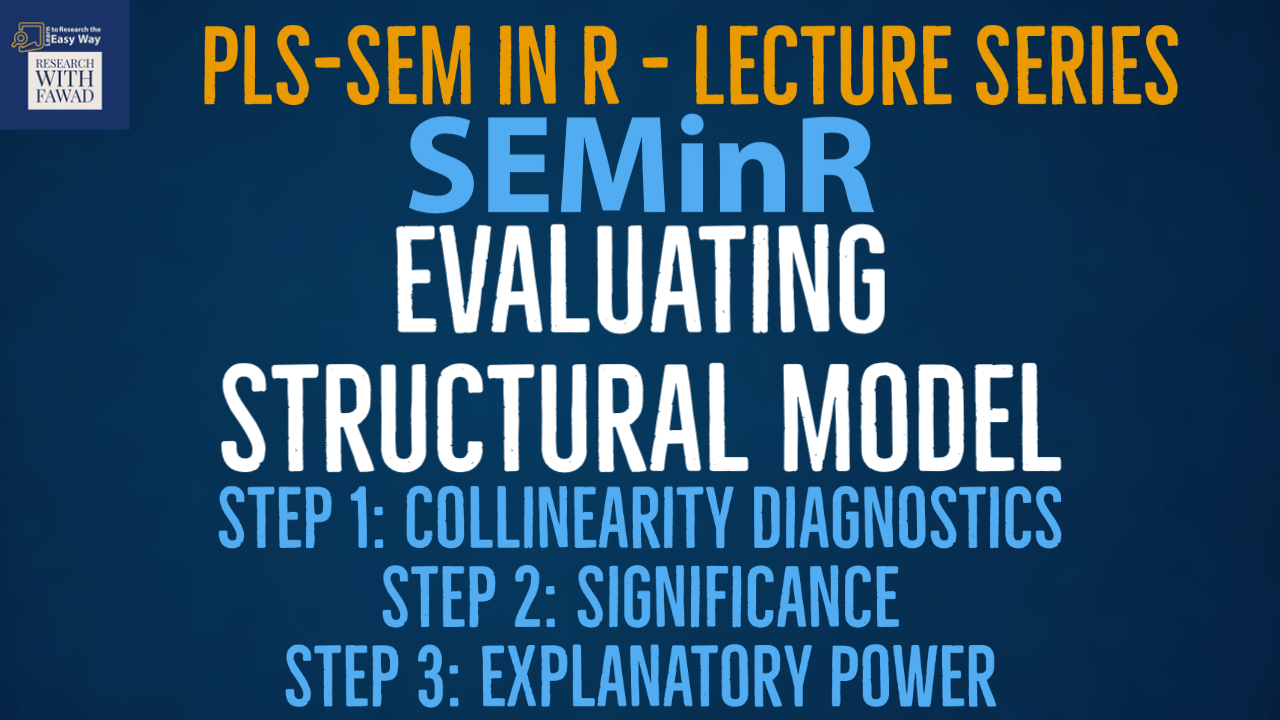
SEMinR Lecture Series
This session is focused on evaluating structural model. The session focuses on the three steps.
Step 1: Collinearity Diagnostics
Step 2: Structural Relationships
Step 3: Explanatory Power (R-Square and F-Square)

This session is focused on evaluating structural model. The session focuses on the three steps.
Step 1: Collinearity Diagnostics
Step 2: Structural Relationships
Step 3: Explanatory Power (R-Square and F-Square)
Next, in the structural model assessment procedure (Step 2), we need to evaluate the relevance and significance of the structural paths. The results of the bootstrapping of structural paths can be accessed by inspecting the bootstrapped_paths element nested in the summary_boot object (Fig.).
Hair Jr, J. F., Hult, G. T. M., Ringle, C. M., Sarstedt, M., Danks, N. P., & Ray, S. (2021). Partial Least Squares Structural Equation Modeling (PLS-SEM) Using R: A Workbook.
The tutorials on SEMinR are based on the mentioned book. The book is open source and available for download under this link.